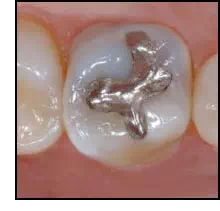 |
||
- Regulated Medical Waste
- Hazardous Materials
- Hazardous Waste
- Pharmaceutical Waste
- Regulations
- Waste Reduction
- Facilities Management
- Assisted Living /
Nursing Homes - Dental Offices
- Search
- Contact
- Home
|
The handling and disposal of dental amalgam was substantially affected by EPA pretreatment standards promulgated in 2017 (Effluent Limitations Guidelines and Standards for the Dental Category). This rule applies to offices where dentistry is practiced that discharge to a municipal sewage treatment plants known as publicly owned treatment works (POTWs). EPA finalized the technology-based pretreatment standards under the Clean Water Act to reduce discharges of mercury and other metals from dental offices into POTWs. Dental offices, which discharge mercury and other metals present in amalgam used for fillings, are the main source of mercury discharges to POTWs; these metals are subsequently released to the environment. The rule requires dental offices to comply with requirements, which are based on practices recommended by the American Dental Association, including the use of amalgam separators. Once captured by the separator, dental amalgam can be recycled. Removing mercury when it is concentrated and easy to manage, such as through low-cost amalgam separators at dental offices (average annual cost per dental office is about $800), is a commonsense solution to managing mercury that would otherwise be released to air, land, and water. The requirements for dental dischargers subject to the rule are detailed in the rule. Here, they are summarized:
Dental dischargers (under any ownership) that were discharging into POTWs prior to July 14, 2017 ("existing sources"), must comply with the standards by July 14, 2020, and submit a one-time compliance report to a Control Authority certifying such by October 12, 2020. Dental dischargers whose first discharge to a POTW occurs after July 14, 2017 ("new sources") must comply with the standards immediately and submit a one-time compliance report certifying such within 90 days after first discharge to a POTW. Your Control Authority is either a local wastewater utility, a state environmental agency, or a U.S. EPA regional office. For dental offices in Alabama, Connecticut, Mississippi, Nebraska or Vermont, your Control Authority is your state agency. For dental offices in all other states: contact your EPA regional office, your local wastewater utility, or your state agency Pretreatment Coordinator to find out who your Control Authority is. This EPA Pretreatment Contact List is a good starting point. Concerning disposal of amalgam wastes, the best method is offsite recycling using a "mail away" licensed service. Acceptable waste generally includes waste dental amalgam, amalgam traps, amalgam separators filters, soft plastic amalgam traps, hard plastic amalgam traps with enclosed steel-wire mesh, teeth with amalgams or "wigglebugs," and encapsulated plastic pills. Most services provide 1-to-5-gallon kits for holding/shipping waste amalgam. More ResourcesFrequently Asked Questions on the Dental Office Category Rule (November 2017)
|
 Dental Offices Managing Specific Wastes - Dental Amalgam
Dental Offices Managing Specific Wastes - Dental Amalgam